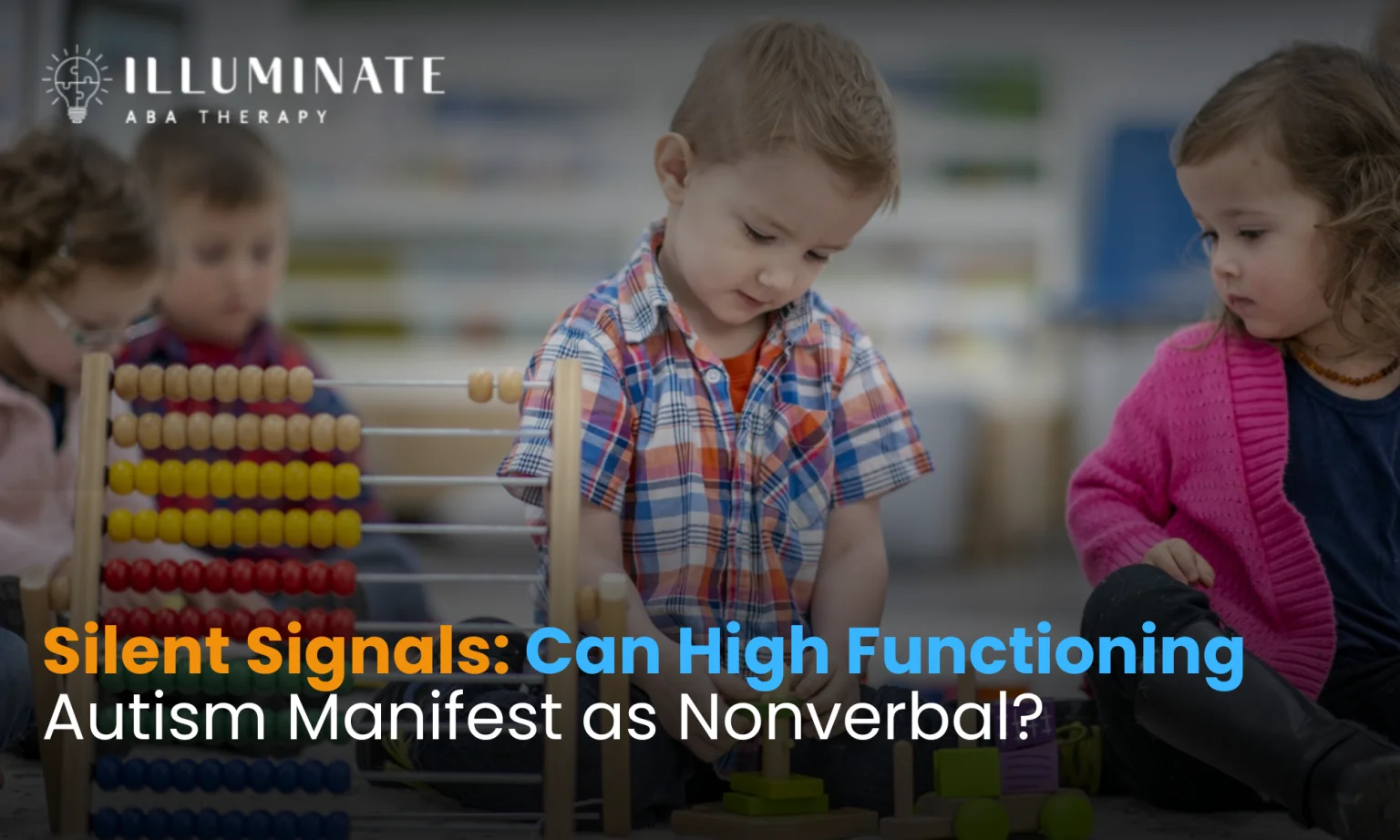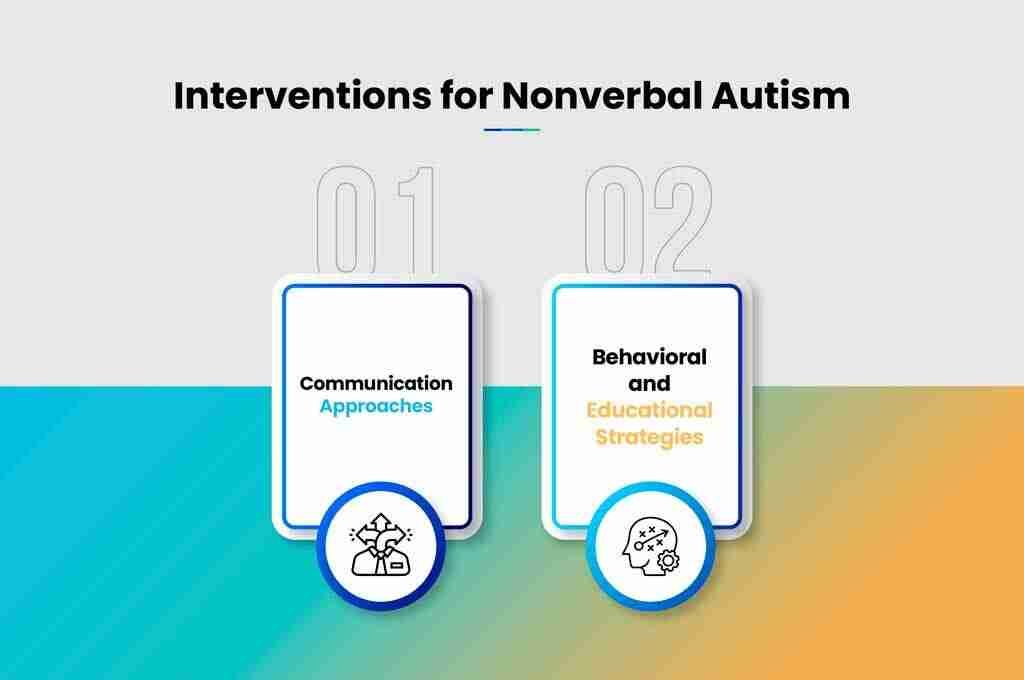Silent Signals: Can High Functioning Autism Manifest as Nonverbal?
ABA TherapyJuly 17, 2025

Understanding Nonverbal Autism
Definition and Prevalence
Nonverbal autism is when someone struggles with spoken language. About 25% to 35% of kids with autism don't speak much or at all. Some kids might start talking later on, while others might always have limited speech abilities.
Non Speaking autism, also called minimally verbal autism, affects around 25 to 30% of children with Autism Spectrum Disorder (ASD), meaning these kids might have little or no speech. Understanding the different levels of communication challenges is key in supporting folks with autism in the best way possible.
Communication Challenges
Not being able to speak can be pretty tough for folks with nonverbal autism. Some might never say more than a few words, while others experience varying degrees of speech delays. Nonverbal individuals can often use other ways to communicate, whether it's American Sign Language, picture cards, or tech tools, to get their ideas across.
Nonverbal or nonspeaking autism brings unique hurdles in communicating that can interfere with making friends, learning in school, and handling daily life. Getting a grip on these challenges and finding ways that work can massively improve the lives of those with nonverbal autism. By understanding how diverse these communication needs are, caregivers, teachers, and experts can craft better strategies to boost communication skills and build meaningful relationships.
Assessment and Diagnosis
Let's talk about figuring out nonverbal autism—it’s not a walk in the park. Autism spectrum disorder (ASD) is like a mixed bag, and it’s estimated that about a quarter to a third of autistic kids are nonverbal. These kids might have different ways of talking things over, like using sign language, picture cards, or even some digital gadgets.
Diagnosing nonverbal autism can be tricky. Traditional assessments that focus on talking can fall flat with kids who don't communicate verbally. Experts agree that watching how these kids act in their usual hangouts can give more useful info on what they're capable of.
Nonverbal or nonspeaking autism brings unique hurdles in communicating that can interfere with making friends, learning in school, and handling daily life. Getting a grip on these challenges and finding ways that work can massively improve the lives of those with nonverbal autism. By understanding how diverse these communication needs are, caregivers, teachers, and experts can craft better strategies to boost communication skills and build meaningful relationships.
Trials of Diagnosis
You might think diagnosing nonverbal autism is straightforward, but there’s a lot of gray area. With ASD, communication varies a lot—some kids speak a little, some not at all. This group is often called nonspeaking or nonverbal autism. For them, speech challenges range from minor hiccups to complete silence.
Plus, there’s often other stuff going on, like sensory issues or co-existing conditions, that makes diagnosis tougher. That’s why a wide-angle approach is best. This means bringing in different experts for speech and behavior checks and getting a peek at how they handle sensory stuff.
Understanding these hurdles is key for healthcare folks, teachers, and parents to come up with better support. Catching it early and getting the right help can really make a difference, boosting the chances for these individuals to thrive.
Interventions for Nonverbal Autism

Helping someone with nonverbal autism isn't a one-size-fits-all deal. You need to find the right mix of communication techniques and behavior tricks to help them thrive. Let's break it down into two main plays: how they can chat without words, and the tactics to guide learning and behavior.
Communication Approaches
Just because someone can't speak doesn't mean they can't communicate. Folks with nonverbal autism often have their own ways of getting the message across. They might vibe better with gestures like American Sign Language, use picture cards, or rely on tech gadgets and apps to share what's on their mind.
Some nonverbal people might actually follow spoken words pretty well, even if they're not chatting back. Boosting and backing all kinds of communication can really brighten their lives and interactions.
Here's the nugget: each person is their own puzzle. Finding what clicks for their communication is the goal. Offering a space where they feel free to express through different routes lets them blossom socially and emotionally.
Behavioral and Educational Strategies
Beyond just how they communicate, stepping up behavioral and educational support is key. Some educational ways, like the TEACCH method, focus on clear, structured, and visual ways to make school life smoother for kids with autism.
On the flip side, behavioral methods like Applied Behavior Analysis (ABA) are all about boosting good behavior and nailing new skills, using plans that fit the individual.
If someone is also tackling other stuff like bursts of energy or jitters, alongside autism, doctors might think about medications. But it's super important to keep an eye on things to ensure the meds help more than they hinder.
Pairing up communication fixes, behavior lessons, and educational backup gives folks with nonverbal autism a better shot at making themselves understood and fitting in. Figuring out what works for each person and playing to their strengths is the recipe for success in helping them grow in a setting that’s all about support and inclusion.
Supporting Individuals with High-Functioning Autism
Folks with high-functioning autism can chat, read, write, and handle everyday stuff like a boss—but still wrestle with the whole "let's have a normal conversation" thing. It's all tied to autism spectrum disorder (ASD), and even if they seem pretty independent, social quirks can trip 'em up. Family, teachers, and buddies need to get clued in on how to support their unique vibes.
Characteristics and Challenges
These individuals might seem aloof when chatting or miss out on those unspoken cues that everyone else picks up like radio signals. Sure, they can remember your birthday down to the second, but they might have more trouble keeping eye contact during the obligatory birthday song. Asperger's used to be its own label but now it's wrapped up in high-functioning autism thanks to some sciencey updates. This kind of ASD is "Level 1," meaning they need the least support outta the bunch, while Levels 2 and 3 need more hands-on attention.
Strategies for Success
Helping out these folks means giving 'em tools to dodge life's little challenges, so check out these tricks:
- Routine is King: A set routine is like a warm security blanket. Mix in some structure, and you'll hand 'em predictability, helping them to cruise through their daily gigs without a hitch.
- Social Skills Check: Some well-placed social skills training can work wonders. Think of it as practice for knowing when to talk, when to nod, and when to give that all-important thumbs-up. Curious? We dive deeper into this stuff in our piece on peer modeling in social skills training for kids with autism.
- Viz to the Max: Turning to visual supports like picture calendars, storyboards, or hint cards can be game-changers for better communication and understanding.
- Emotional Gear: Teach 'em ways to handle feelings and defuse emotional ticking bombs. It's all about channeling emotions in a mellow and insightful manner.
- Tailor-Made Learning: Work alongside educators to whip up Individualized Education Plans (IEPs) that fit like a glove, matching their learning style to their unique needs and paving the way for academic win after win.
Equip them with the right tactics and a nurturing environment, and folks riding the high-functioning autism wave will not just ride, but surf through life, tackling social puzzles with finesse, and living life to its fullest.
Learn More: Anhedonia in Generalized Anxiety Disorder: Causes and Treatments
